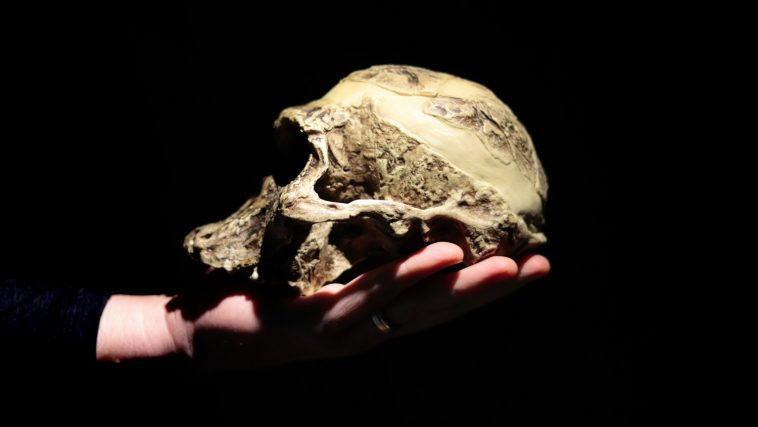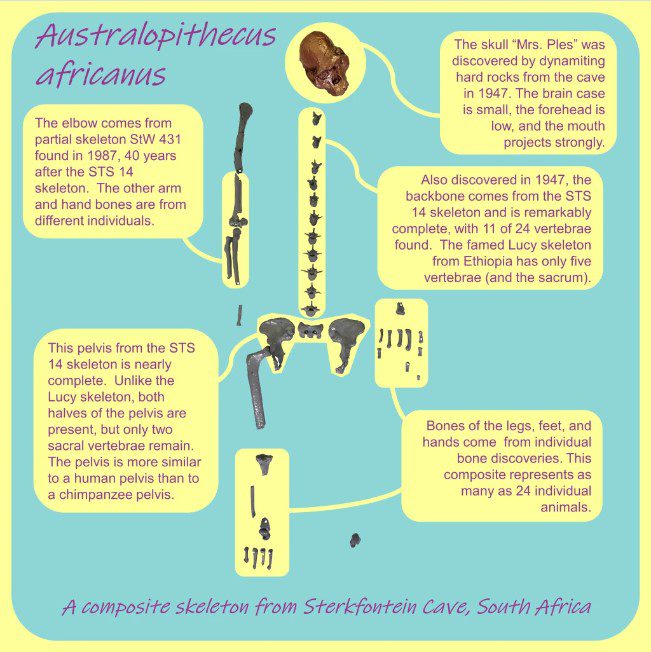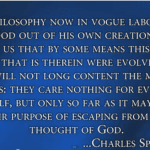[Originally published as The bones of Australopithecus africanus]
Among creationists, the partial Ethiopian skeleton known as “Lucy” (Australopithecus afaraensis) is infamous, but the bones found in a cave in South Africa give us just as much information about her southern cousin, A. africanus.
The first remains of Australopithecus africanus were pieces of a juvenile skull found in a lime quarry in South Africa in 1924. Dart called this Taung child Australopithecus meaning “southern ape.” Fossils from the Sterkfontein Cave were known from the 1890s, but it was until the 1930s that Dart and Robert Broom began regular excavations at the site. Today there are hundreds of fossils known from this locality including the fabulous Little Foot skeleton first found in 1994.
This composite skeleton represents the state of our knowledge apart from Little Foot. The original STS 5 skull (“Mrs. Ples”) from 1947 represents the head, with the spine and pelvis coming from a partial skeleton STS 14 also found in 1947. The right elbow comes from a partial skeleton found in 1987, StW 431. The remaining bones were individual discoveries, and are not believed to represent a single skeleton.
Numerous features from these animals’ skeletons attest to their ability to walk upright, including the angle of the thighbone, the bowl-shaped pelvis, the curvature of the lower spine, and the position of the foramen magnum on the bottom of the skull. They did not walk exactly like we do, but they could regularly and readily walk on two feet.
Scientists continue to debate what these fossils should actually be called, with some preferring to lump them altogether into Au africanus (as shown here) and others suggesting there are two or even three species. Still other scientists just refrain from giving them a technical name at all and instead just refer to them as the Sterkfontein fossils.
Creation research has shown time and again that Au. africanus and the Sterkfontein fossil are extinct nonhuman apes that show us the diversity of ape forms that existed in the past.







